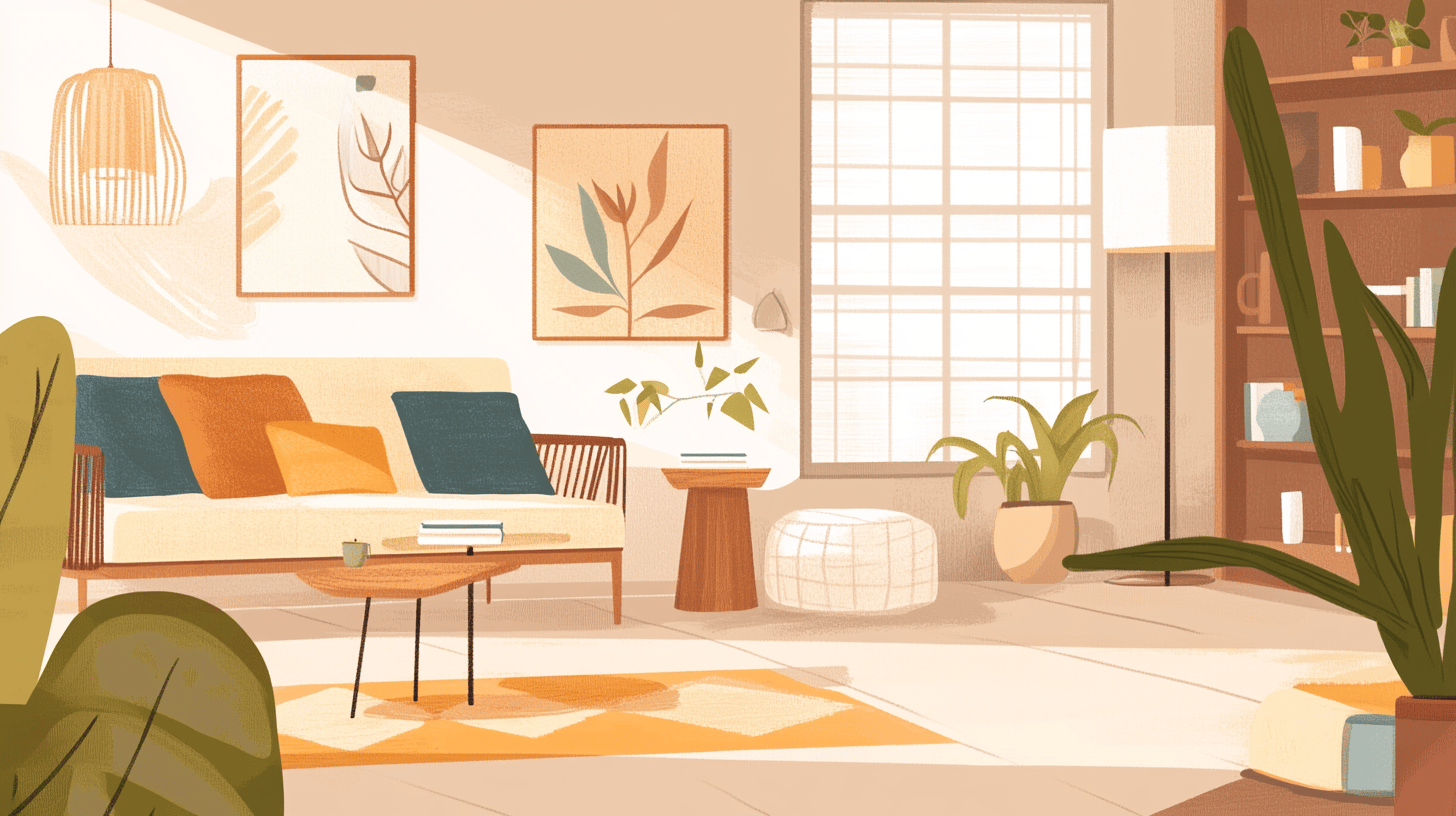Transforming a space in your home isn’t just about aesthetics, it’s also about creating a comfortable and functional environment. In this guide, we’ll explore several tips and tricks on how to decorate your home in a way that reflects your personal style and promotes well-being. Whether you’re looking for ways to update your space or just want to add a fresh touch to your decor, this post is for you. Let’s dive in!
Understanding Your Personal Style
Before diving into the practical tips, it’s important to identify your personal style. This will help inform all decorating decisions, ensuring that the end result is a reflection of who you are. Consider:
– Minimalism: Simple lines, open spaces and a neutral color palette. – Rustic Style: Natural elements, wood and a feeling of coziness. – Modernity: Clean surfaces and a mix of vibrant colors with metallic elements. – Vintage: Unique pieces, usually from past eras, that bring a nostalgic air.
Identifying your style can be a great place to start. Search online, look at home decor magazines, and look for inspiration on platforms like Pinterest or Instagram.
1. Choose a Color Palette
Colors have the power to transform a space. When choosing a color palette, think about how each color reflects your style and creates the atmosphere you want. Warm colors (reds, oranges) can create a vibrant space, while cool colors (blues, greens) promote calm and relaxation. It’s a good idea to choose a neutral base and add pops of color with decorative objects, pillows or pictures.
2. Lighting is Essential
Lighting can completely change the feel of any room. Invest in different light sources: natural light, floor lamps, table lamps, and recessed lights. Remember that soft lighting is ideal for creating a cozy ambiance in the evening, while bright light is perfect for work areas.
3. Multifunctional Furniture
In smaller spaces, choose furniture that has more than one function. Sofa beds, coffee tables with storage compartments, and ottomans that can be used as seats or tables are great options. In addition to saving space, these pieces of furniture help to keep the space organized and functional.
4. Natural Elements
Incorporating natural elements like plants, rocks, and wood brings life to a space and improves air quality. Choose plants that suit your home’s environment and lifestyle. If you don’t have a lot of time to care for plants, opt for high-quality succulents, cacti, or artificial plants.
5. Cultural Traditions
Incorporating elements that represent your culture or family history can add a personal and unique touch to your space. This could include artwork, tapestries, or even inherited furniture. These details can help make your home a unique and meaningful space.
6. Art and Photo Exhibition
A great way to personalize your home is through art and photography. Create an art gallery in your living room or hallway. Use different sizes of paintings, frames, and types of artwork to create a sense of movement. This not only enhances the aesthetics, but also makes visitors feel more welcome.
7. Less is More: The Art of Organization
An organized space is essential for comfort. Getting rid of items you no longer use and keeping only what you need can do wonders for your decor. Try categorizing your items and choosing creative storage solutions, such as open shelves, baskets, and furniture with compartments.
8. Personalize the Outdoor Area
Don’t forget your outdoor space! A small garden, porch or balcony can be a charming addition to your home. Use comfortable outdoor furniture, cushions and even lighting to create a space that can be used during the day and at night. Vertical gardens, wooden benches and grills are also great additions.
9. Textile Touches
Cushions, curtains, rugs and bedspreads can transform the look of a room in a simple and cost-effective way. Mix and match different textures and patterns to create an interesting look. Also, don’t forget about comfort; choose materials that are pleasant to the touch.
10. Keep Harmony
Finally, no matter how creative you are, it’s vital to maintain some visual cohesion in your space. This ensures that each element works in harmony, creating a home where all components complement each other. One tip is to choose a color or material that appears in each room to create a visual narrative between the spaces in your home.
Conclusion
Decorating your home can seem like a daunting task, but remember: the most important thing is that your space reflects who you are and provides comfort for you and your guests. Use these tips to get started on your decorating journey, ensuring that every choice you make is intentional and personal.
Don’t forget to share this article with friends who are looking for tips on how to transform their homes! And feel free to comment below to share your decorating experiences or share your own tips! Sharing knowledge helps us create even more inspiring homes.

